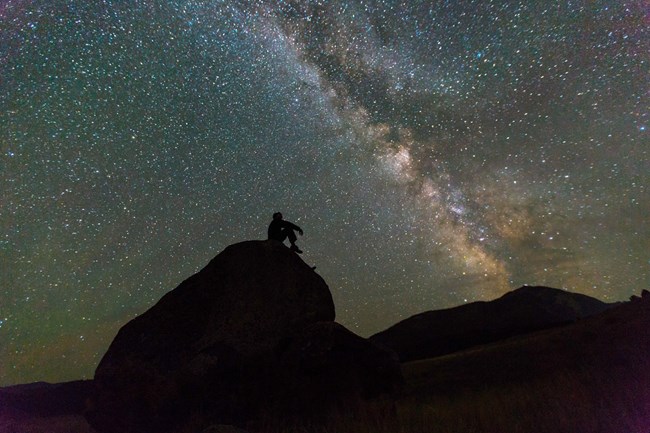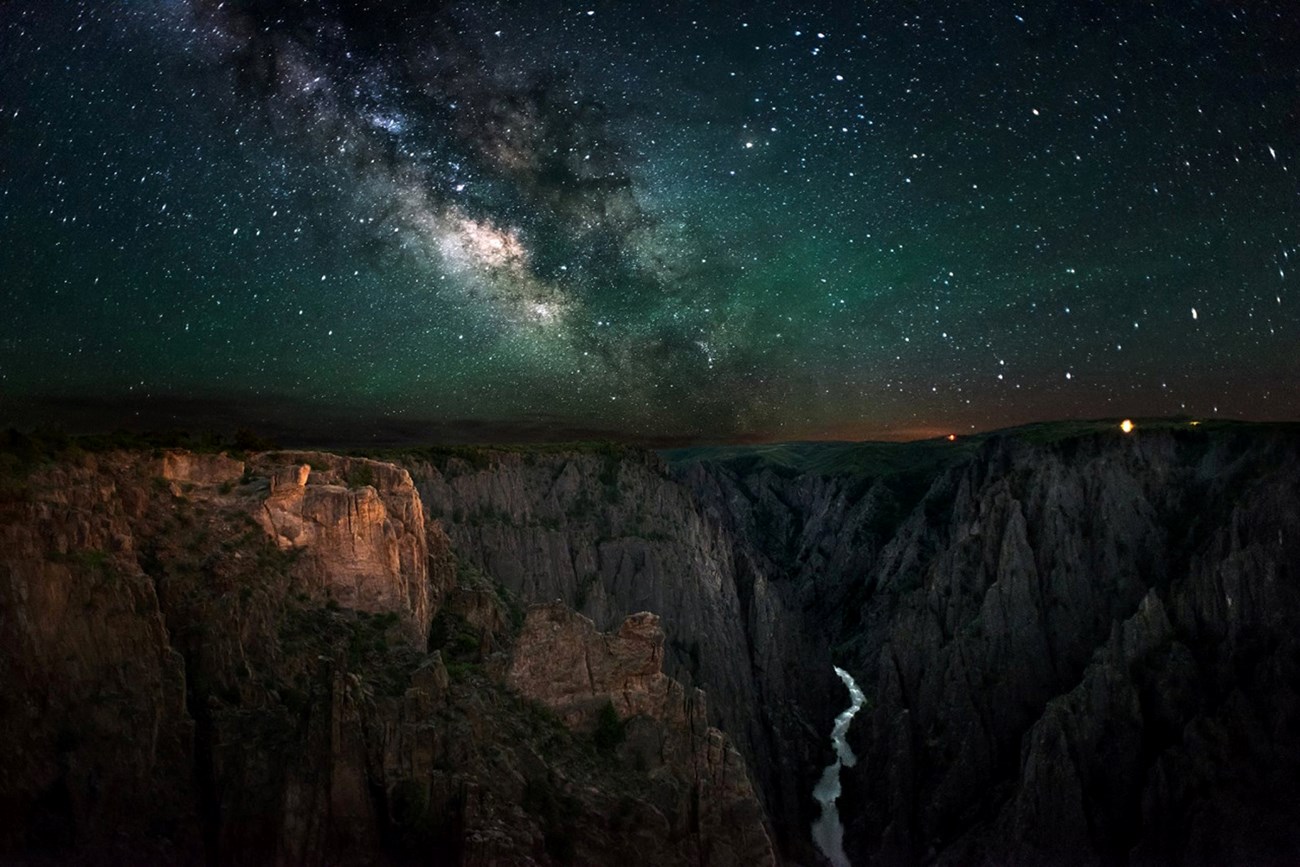
NPS / Neal Herbert
In wilderness, we preserve more than outstanding opportunities for solitude or primitive and unconfined recreation: we also preserve complex ecosystems and landscapes where there are minimal modern human influences and permanent developments. However, recent research shows that between 2011-2022 there was a decrease of 10% on average in the amount of stars people across the globe could see every night (Science, 2023). Unlike other forms of pollution, light pollution is a problem with solutions that are easy to implement and that deliver immediate and lasting results, such as the NPS Sustainable Outdoor Lighting Principles.
The Wilderness Act established a National Wilderness Preservation System for “the permanent good of the whole people." The law’s primary mandate is to preserve wilderness character, of which dark night skies are a part. Wilderness character is a holistic concept based on the interaction of (1) biophysical environments primarily free from modern human manipulation and impact, (2) personal experiences in natural environments relatively free from the encumbrances and signs of modern society, and (3) symbolic meanings of humility, restraint, and interdependence that inspire human connection with nature. Taken together, these tangible and intangible values define wilderness character and distinguish wilderness from all other lands (Keeping it Wild 2, 2015).
Five tangible qualities of wilderness character have been derived from the Wilderness Act.
- Untrammeled Quality: Wilderness is essentially unhindered and free from the intentional actions of modern human control or manipulation.
- Natural Quality: Ecological systems are substantially free from the effects of modern civilization.
- Undeveloped Quality: Wilderness is essentially without permanent improvements or the sights and sounds of modern human occupation.
- Opportunities for Solitude or Primitive and Unconfined Recreation Quality: Wilderness provides opportunities for solitude or a primitive and unconfined type of recreation.
-
Other Features of Value Quality: Wilderness may also contain ecological, geological, or other features of scientific, educational, scenic, or historical value.
Excessive and uncontrolled use of outdoor lighting may threaten these qualities. Alternately, natural lightscapes and night skies that are not impacted (to the greatest extent possible) by artificial light pollution complement wilderness character.
The 2006 NPS Management Policies, Chapter 6; NPS Director’s Order 41; and the NPS Reference Manual 41 all provide guidance for preservation and management of the wilderness resource, including its qualities and values associated with the night sky.

Reflections on the Night Skies as a Wilderness Value
Imagine you are in a wilderness area, whether it is a beach, mountain, or desert setting. Glaring light originating inside or outside wilderness may interrupt your opportunity to seek solitude. A visitor can explore deep into a wilderness area, yet still be followed by the glow of distant lights.

NPS/ Ben Banet
References
Landres, Peter; Barns, Chris; Boutcher, Steve; Devine, Tim; Dratch, Peter; Lindholm, Adrienne; Merigliano, Linda; Roeper, Nancy; Simpson, Emily. 2015. Keeping it Wild 2: an Updated Inter-agency Strategy to Monitor Trends in Wilderness Character Across the National Wilderness Preservation System. Gen. Tech. Rep. RMRS-GTR-340. Fort Collins, CO: U.S. Department of Agriculture, Forest Service, Rocky Mountain Research Station. 114 p
The Wilderness Act, Public Law 88-577 (16 U.S. C. 1131-1136), 88th Congress, Second Session, September 3, 1964
Last updated: July 28, 2025
